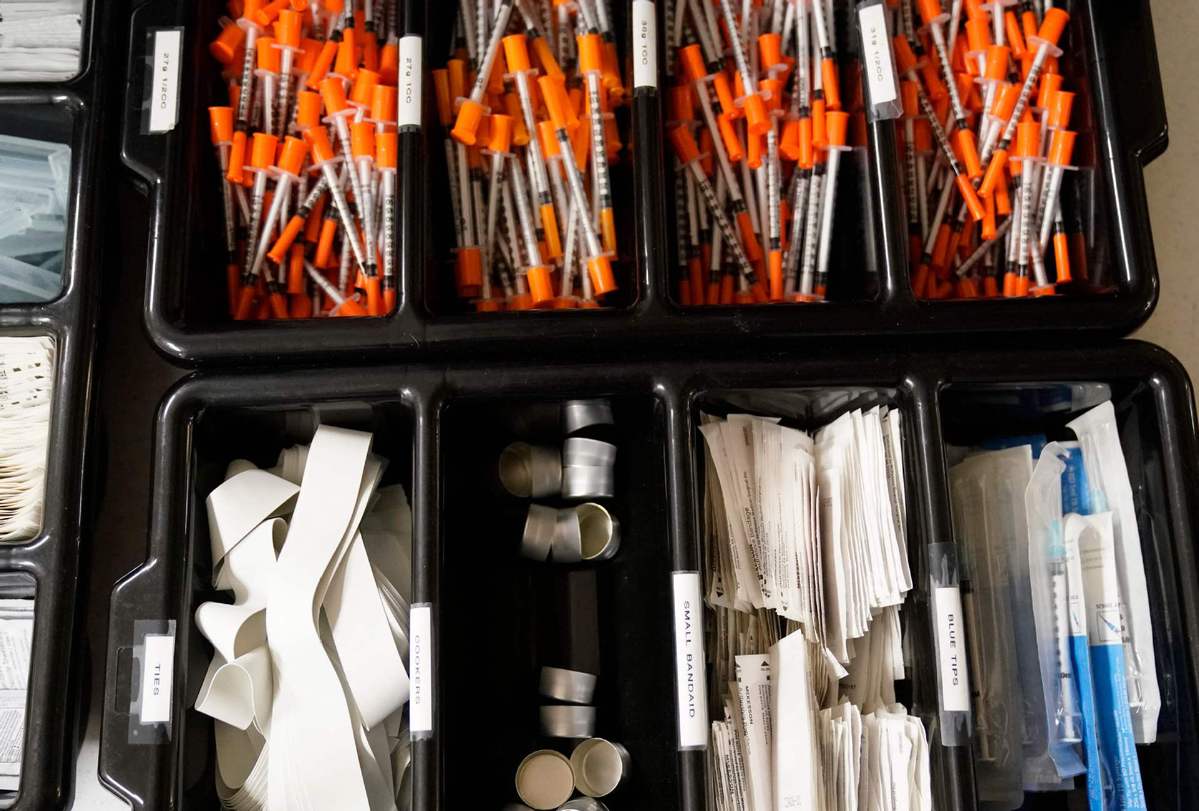US overdose deaths among black people rose in 2020
By AI HEPING in New York | China Daily Global | Updated: 2022-07-20 10:52
Native Americans also saw an increase early in pandemic, with fentanyl largely to blame

The United States saw the largest increase ever in the rate of drug overdose deaths in the first year of the COVID pandemic, with the death rate increasing most dramatically — 44 percent — among black Americans, the Centers for Disease Control and Prevention reported Tuesday.
From 2019 to 2020, the CDC said, the rate of fatal drug overdoses rose by 30 percent overall from 21.6 deaths per 100,000 people in 2019 to 28.3 deaths per 100,000 in 2020. Most deaths were due to illicit fentanyl, the powerful synthetic opioid.
"These numbers are staggering," said Dr Debra Houry, the CDC's acting principal deputy director and director of the agency's National Center for Injury Prevention and Control. "Drug overdoses were on the rise prior to 2020, but not at this rate,'' she said,
Overdose deaths increased 44 percent for black people and 39 percent for Native Americans in 2020 compared with 2019, as the COVID-19 pandemic disrupted access to care and exacerbated racial inequality, the agency said.
Fatal drug overdoses increased among white people though at a slower rate, 22 percent. In 2019, 25.2 overdose deaths per 100,000 people occurred among white Americans, compared with 30.7 per 100,000 in 2020.
The agency said 2020 was the most recent year for which it had complete data from 25 states analyzed in the study and Washington DC.
While substance abuse was common among people who died, CDC researchers found that a history of substance-use treatment wasn't. About a tenth of Native Americans had reportedly received treatment and 1 in 12 black people. White people were nearly twice as likely to have received treatment as black people.
The findings show how the escalating overdose crisis is exacting a mounting toll on minority groups that are in some cases marginalized by the healthcare system, CDC researchers said.
According to the CDC, black people between ages 15 and 24 experienced the largest increase in overdose death rates from 2019 to 2020 at 86 percent. Native American women between 25 and 44 years old were nearly two times as likely to die of an overdose in 2020 than their white counterparts.
Among black men 65 years and older, the rate of deadly overdoses was nearly seven times that of white men of the same age in 2020.
The sharp increase in drug overdose deaths was apparent by 2021, when the CDC reported that the country had surpassed 100,000 such deaths for the first time ever in 12-month period.
Overdose rates were higher in areas with more opioid-treatment programs than average, a finding that the study's authors said demonstrated other barriers to access for some people.
Overdose rates were also higher in counties with higher income inequality, according to the report.
"Just because there is availability of services doesn't mean that services are actually accessible," said Mbabazi Kariisa, a health scientist in the CDC's overdose-prevention division. "Factors like stigmatization as well as mistrust in the general healthcare system may prevent people from accessing the treatment services."
Drug deaths among black people in 2020 passed the rate in the white population for the first time since 1999, researchers at the University of California, Los Angeles have shown. The gap in overdose rates between the black and white populations was narrowing before the pandemic.
Health providers are more likely to direct black patients to methadone, which is delivered by highly regulated opioid-treatment programs that often require daily visits to obtain the medication, researchers have found.
Expanding access to telehealth and mobile services for opioid treatment would help improve access, said Houry.
"We believe that now is the time to provide the communities with the additional resources they need," she said.
























